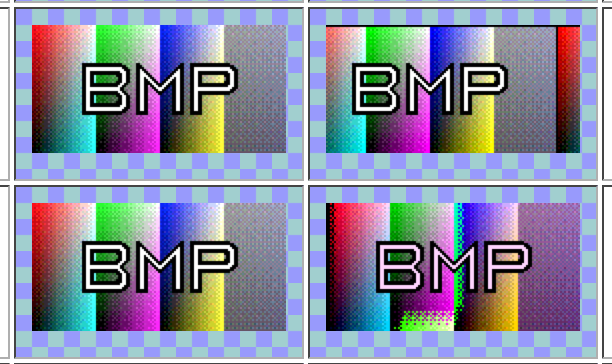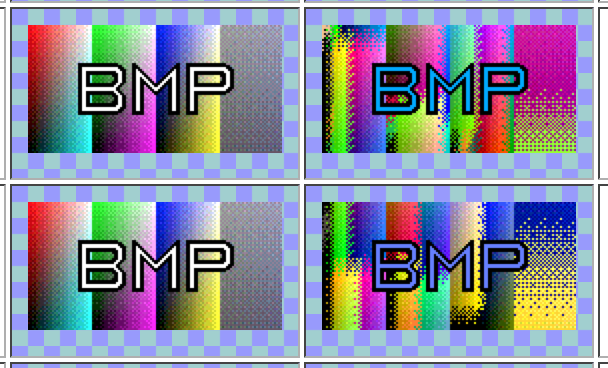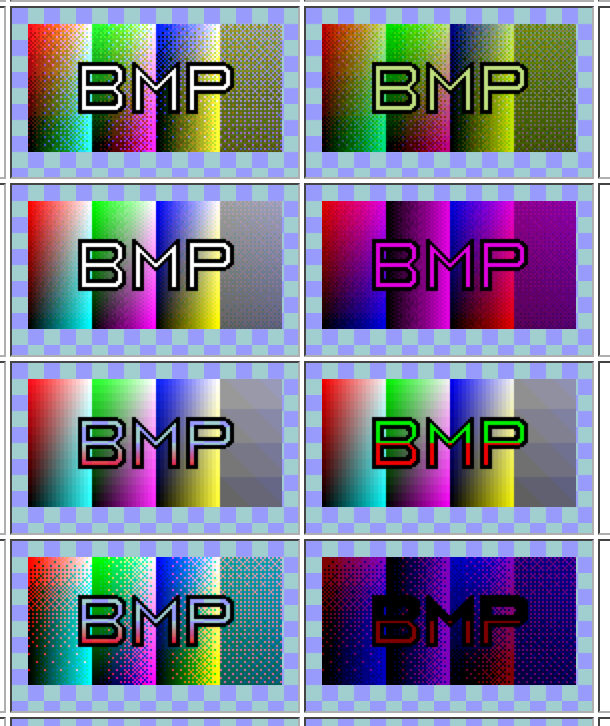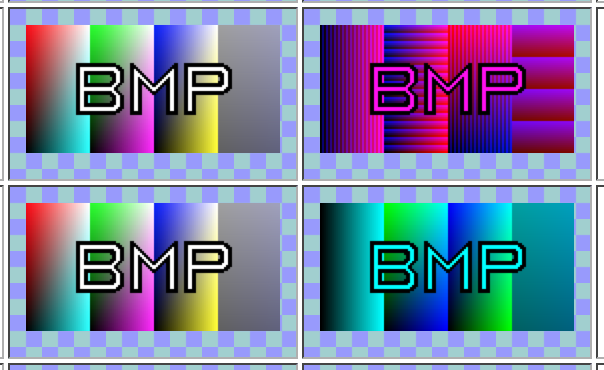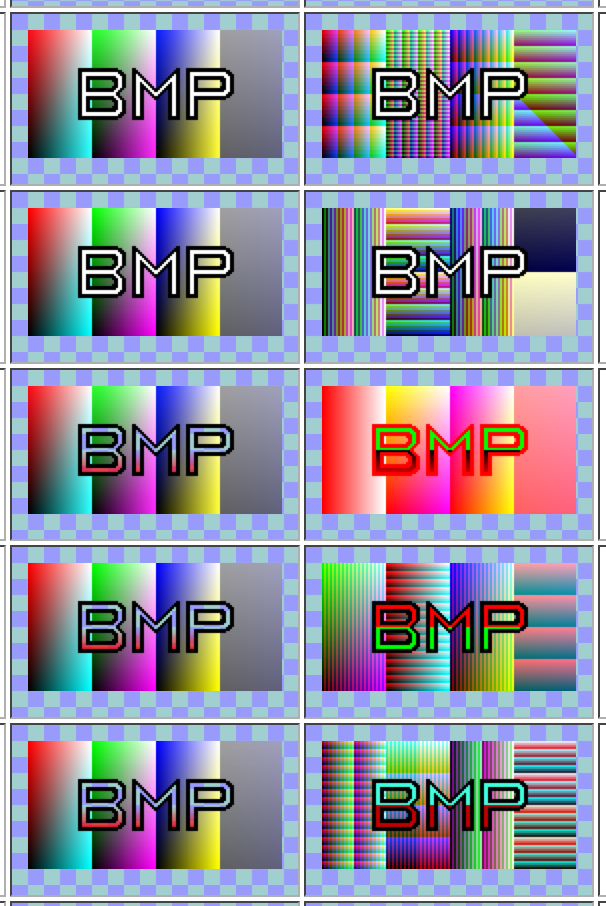Nicholas Nethercote: I rewrote Firefox’s BMP decoder |
Recently I’ve been deliberately working on some areas of Firefox I’m unfamiliar with, particular relating to graphics. This led me to rewriting Firefox’s BMP decoder and learn a number of interesting things along the way.
Image decoding
Image decoding is basically the process of taking an image encoded in a file and extracting its pixels. In principle it’s simple. You start by reading some information about the image, such as its size and colour depth, which typically comes in some kind of fixed-size header. Then you read the pixel data, which is variable-sized.
This isn’t hard if you have all the data available at the start. But in the context of a browser it makes sense to decode incrementally as data comes in over the network. In that situation you have to be careful and constantly check if you have enough data yet to safely read the next chunk of data. This checking is error-prone and tends to spread itself all over the image decoder.
For this reason, Seth Fowler recently wrote a new class called StreamingLexer that encapsulates this checking and exposes a nice state-based interface to image decoders. When a decoder changes state (e.g. it finishes reading the header) it tells StreamingLexer how many bytes it needs to safely enter the next state (e.g. to read the first row of pixels) and StreamingLexer won’t return control to the decoder until that many bytes are available.
Another consideration when decoding images is that you can’t trust them. E.g. an image might claim to be 100 x 100 pixels but actually contain less data than that. If you’re not careful you could easily read memory you shouldn’t, which could cause crashes or security problems. StreamingLexer helps with this, too.
StreamingLexer makes image decoders simpler and safer, and converting the BMP decoder to use it was my starting point.
The BMP format
The BMP format comes from Windows. On the web it’s mostly used on the web for favicons though it can be used for normal images.
There’s no specification for BMP. There are eight in-use versions of the format that I know of, with later versions mostly(!) extending earlier versions. If you’re interested, you can read the brief description of all these versions that I wrote in a big comment at the top of nsBMPDecoder.cpp.
Because the format is so gnarly I started getting nervous that my rewrite might introduce bugs in some of the darker corners, especially once Seth told me that our BMP test coverage wasn’t that good.
So I searched around and found Jason Summers’ wonderful BMP Suite, which exercises pretty much every corner of the BMP format. Version 2.3 of the BMP Suite contains 57 images, 23 of which are “good” (obviously valid), 14 of which are “bad” (obviously invalid) and 20 of which are “questionable” (not obviously valid or invalid). The presence of this last category demonstrates just how ill-specified BMP is as a format, and some of the “questionable” tests have two or three reference images, any of which could be considered a correct rendering. (Furthermore, it’s possible to render a number of the “bad” images in a reasonable way.)
This test suite was enormously helpful. As well as giving me greater confidence in my changes, it immediately showed that we had several defects in the existing BMP decoder, particular relating to the scaling of 16-bit colors and an almost complete lack of transparency handling. In comparison, Chrome rendered pretty much all the images in BMP suite reasonably, and Safari and Edge got a few wrong but still did better than Firefox.
Fixing the problems
So I fixed these problems as part of my rewrite. The following images show a number of test images that Firefox used to render incorrectly; in each case a correct rendering is on the left, and our old incorrect rendering is on the right.
It’s clear that the old defects were mostly related to colour-handling, though the first pair of images shows a problem relating to the starting point of the pixel data.
(These images are actually from an old version of Firefox with version 2.4 of BMP Suite, which I just discovered was released only a few days ago. I just filed a bug to update the copy we use in automated testing. Happily, it looks like the new code does reasonable things with all the images added in v2.4.)
These improvements will ship in Firefox 44, which is scheduled to be released in late January, 2016. And with that done I now need to start thinking about rewriting the GIF decoder…
https://blog.mozilla.org/nnethercote/2015/11/06/i-rewrote-firefoxs-bmp-decoder/
| Комментировать | « Пред. запись — К дневнику — След. запись » | Страницы: [1] [Новые] |
